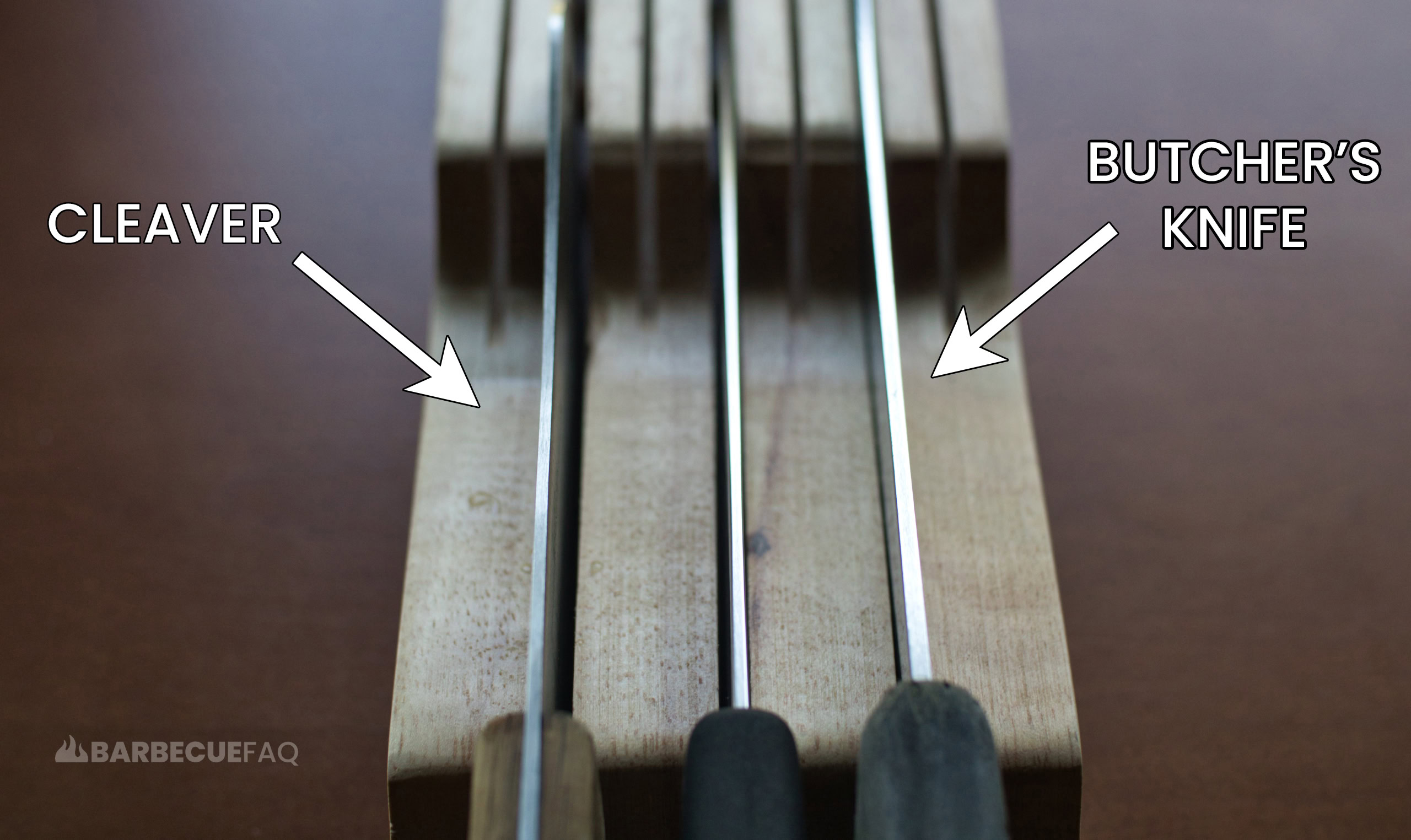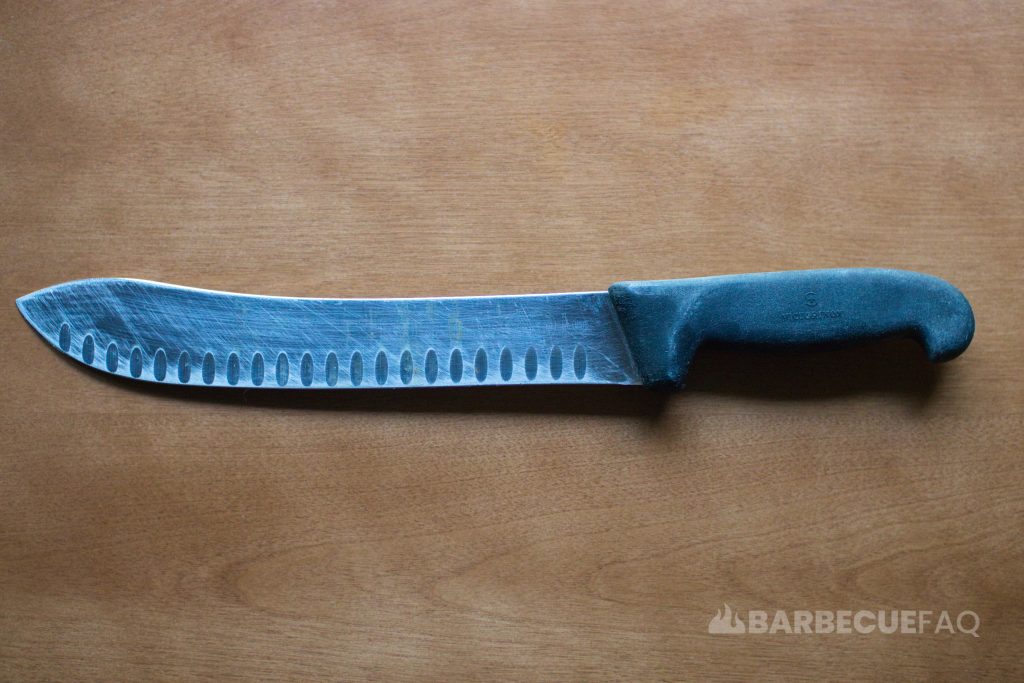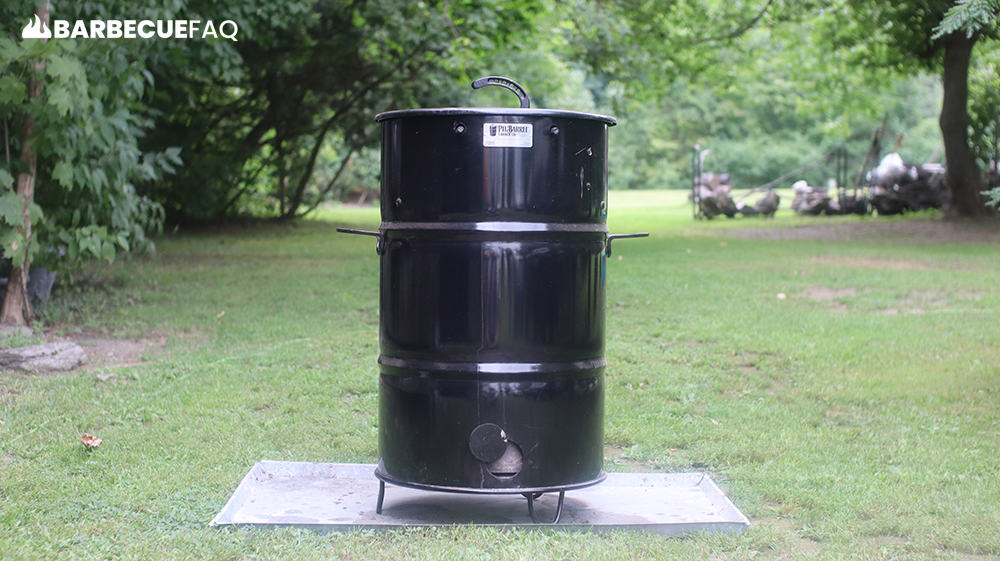While old Cartoons depict pictures of a menacing butcher with HUGE cleavers, these aren’t commonly used by actual Butchers.

A butcher’s knife features a long blade (8″ or 10″ is standard), a curved belly, a thick handle, and is traditionally inflexible.
A cleaver is heavy, with a broad/short blade, and is designed for cutting through bone and muscle of small game OR dense vegetables.
Their Blade Differs is in Terms of Thickness, Weight, Shape, and Size.

A butcher’s knife features a long blade with a curved belly.
The belly portion is used for removing hides without puncturing it. The weight is balanced and the blade is remarkably light – helping to minimize fatigue when butchering several animals.
It can be somewhat thicker than a chef’s knife (depending on the brand).

A cleaver features a shorter, rectangular blade with a straight edge.
The blade is thicker than a conventional chef’s knife and often feels blade-heavy. This weight aids in chopping through the bones, cartilage, and connective tissue of small game, as well as through hearty root vegetables.
The weight of the cleaver is on purpose.
It’s Newton’s Second Law of Motion:
- Force = Mass * Acceleration
You an generate more force simply because of the mass of the cleaver in comparison to the mass of the Butcher’s knife.
You’re not going to use a Butcher’s knife with much acceleration. It’s an instrument for precision cutting as apposed to chopping through bone.
Not ALL Butcher’s Use the Same Knife
The knife I shared above is what most would call a typical “butcher’s knife.”
But not all butchers reach for the same knife.
Some use breaking knives, cimeters, boning knives, filet knives etc.





